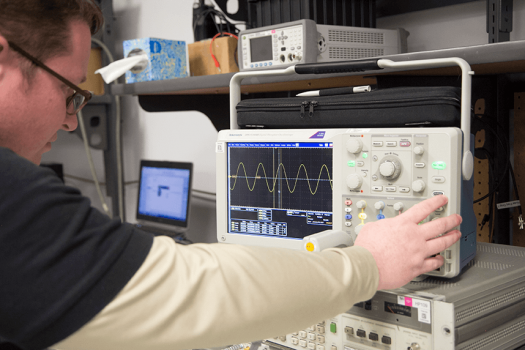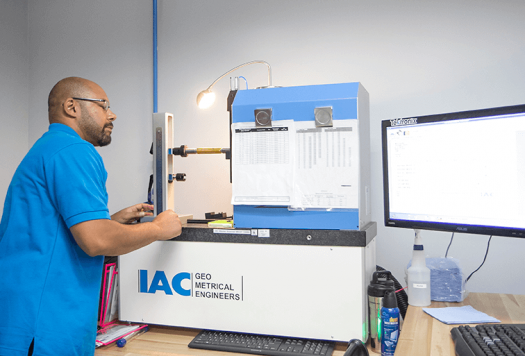與我們聯絡
與 Tek 業務代表即時對談。 上班時間:上午 6:00 - 下午 4:30 (太平洋時間)
請致電
與 Tek 業務代表即時對談。 上班時間:上午 8:30 - 下午 5:30 (太平洋時間)
下載
下載手冊、產品規格表、軟體等等:
意見回饋
One frequently asked question is: "Why should I calibrate my instrument?"
The calibration of instruments is all about confidence in the measurement results you're getting. Calibrating your instrument assures you that your measurements are accurate within the specification limits that led you to select the instrument in the first place. Routine calibrations are your prescription for the continued health and performance of your instrument.
What are the costs and risks of not calibrating your instrument?
- In production test, you may encounter false passes or (equally undesirable) false failures. False passes can send inferior products to your customers potentially resulting in a product recall or financial liability, ruining your reputation for quality. False failures end up in the reject bin, ruining yields and prompting costly rework or scrap.
- In the engineering lab, inaccurate measurements can distort your findings about the behavior of an emerging design. Imagine going through an unnecessary design turn because your instrument wrongly measured a rise time!
- Commerce depends on globally agreed standards of weights and measures. Are those wheels torqued properly? Is the pressure reading low? is the gas flow correct? Discovery of the error often happens at the end of the process where it's most expensive to correct. Only traceable calibration can ensure adherence to these standards.
- There may be contractual or regulatory requirements stipulating a regular calibration regimen. The penalty for non-compliance could be fines, loss of business, plant shut down or worse.
- Sometimes a calibration procedure reveals an underlying problem that could evolve into a costly failure if left unattended.
Minimize risk by choosing a calibration service provider who can support your instruments and meet your regulatory requirements. Read our whitepaper to learn how to evaluate service providers and get the most value for your investment.


Calibration Intervals
Today's digital instruments are not exempt from regular calibrations. Even though they are inherently more stable than their analog predecessors, their tolerances are much narrower than in the past. And even the latest digitizing instruments have analog circuitry—preamplifiers, buffers, etc.—whose performance can change over time. The calibration process confirms adherence to the published specifications.
The interval of test equipment calibration is influenced by many factors and ultimately needs to be determined by the end user and communicated to the calibration service provider. Tektronix has the expertise and system tools to assist customers with calibration interval analysis that will enable you to manage your risk and reduce your overall cost of calibration.
Read our whitepaper about calibration intervals and learn how to determine the best interval for your needs.
Why Choose Tektronix for Calibration Service?
- Calibration services for equipment from 9,000-plus manufacturers—far more than just Tektronix!
- Extensive global service network—more than 100 points of service.
- Superior quality—181 ISO/IEC 17025:2005 accreditation parameters.
- 1,100-plus associates—highly skilled technicians and sales representatives.



